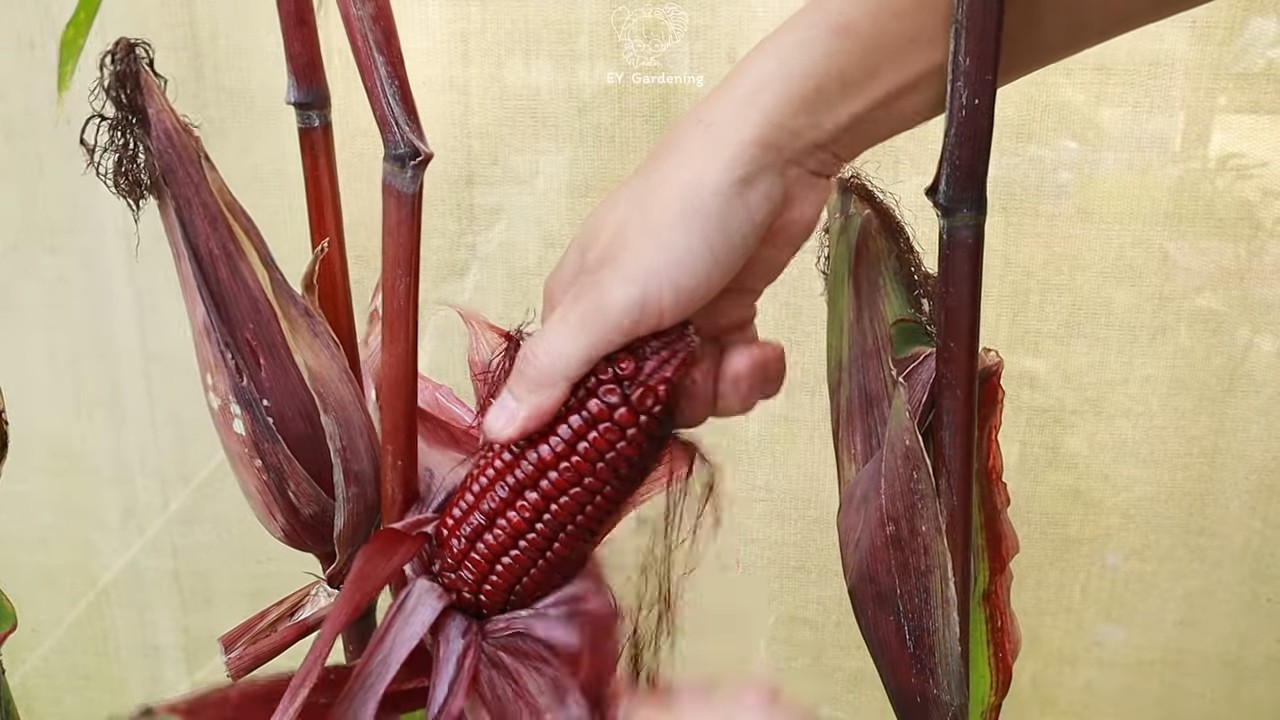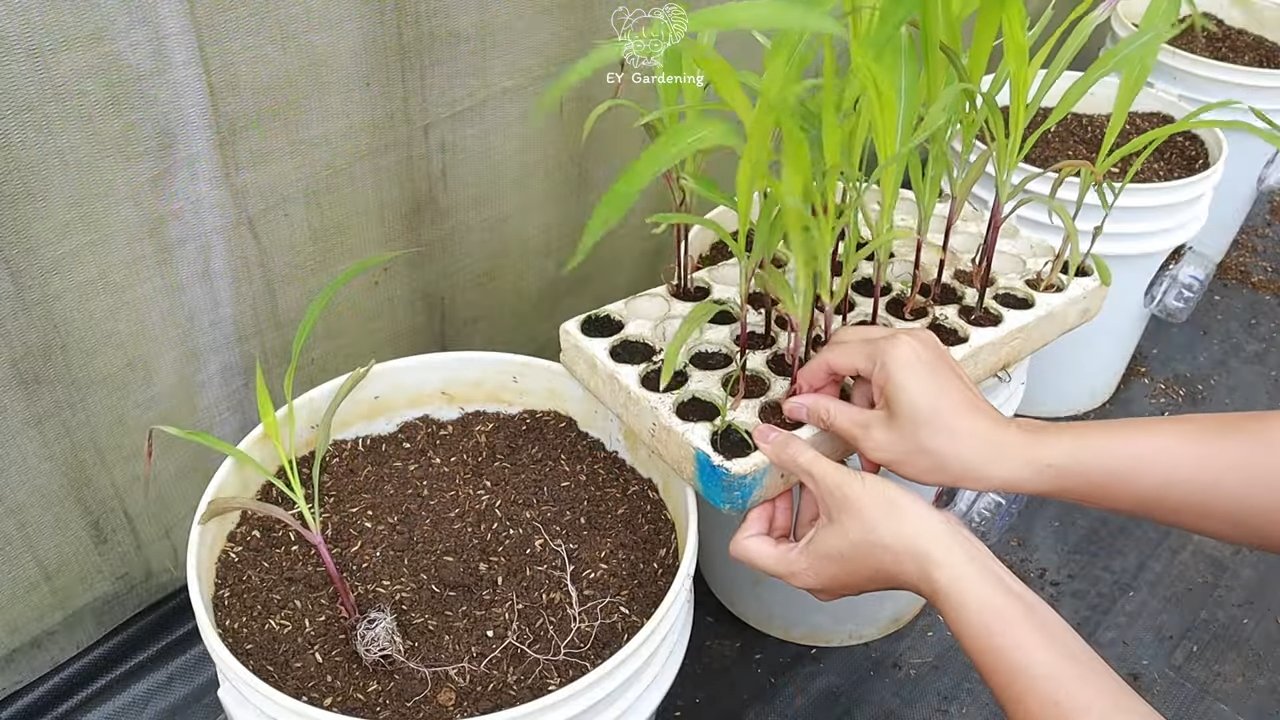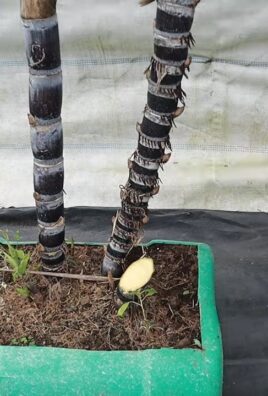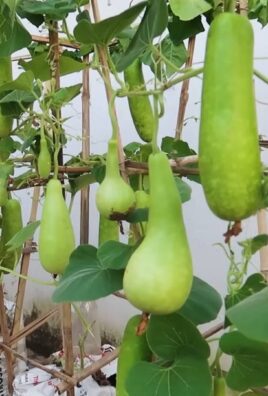Purple corn container gardening: sounds intriguing, doesn’t it? Imagine vibrant, deep purple ears of corn growing right on your patio or balcony! Forget the sprawling fields of traditional corn; we’re bringing the farm to you with this exciting DIY project. For centuries, purple corn has been a staple in Andean cultures, prized not only for its striking color but also for its rich antioxidant properties. It was even used in ancient dyes and traditional medicines!
But why should you try purple corn container gardening? Well, for starters, it’s a fantastic conversation starter! Imagine the look on your neighbor’s faces when they see your unique harvest. More importantly, it’s a fun and rewarding way to grow your own food, even if you have limited space. Plus, with concerns about food security and the desire for healthier, locally sourced options, growing your own purple corn allows you to control exactly what goes into your food. I’m excited to share my tips and tricks for successfully growing this beautiful and nutritious crop in containers, transforming your small space into a vibrant and productive garden. Let’s get started!

Growing Purple Corn in Containers: A DIY Guide
Hey there, fellow gardening enthusiasts! Ever thought about growing your own vibrant, antioxidant-rich purple corn? It’s not just for large farms anymore! With a little know-how, you can cultivate this unique crop right on your patio or balcony. I’m going to walk you through the entire process, from choosing the right container to harvesting those beautiful purple ears. Let’s get started!
Choosing the Right Container and Soil
First things first, we need to talk about the foundation of our purple corn garden: the container and the soil.
* Container Size: Purple corn needs room to grow, both above and below the soil. I recommend a container that’s at least 12 inches in diameter and 12 inches deep. Bigger is generally better, as it allows for more root development and stability, especially when the corn stalks get tall. A 5-gallon bucket works great, but a larger half-barrel planter is even better if you have the space.
* Drainage: This is crucial! Make sure your container has adequate drainage holes. Corn doesn’t like sitting in soggy soil. If your container doesn’t have enough holes, you can easily drill a few more.
* Soil Type: Purple corn thrives in well-draining, fertile soil. A good potting mix is essential. I like to use a mix of:
* Commercially available potting mix (about 60%)
* Compost (about 20%) – This adds nutrients and improves drainage.
* Perlite or Vermiculite (about 20%) – This helps with aeration and drainage.
Planting Your Purple Corn
Now for the fun part: planting!
1. Soaking the Seeds (Optional): While not strictly necessary, soaking your purple corn seeds in water for 12-24 hours before planting can help speed up germination. I usually do this, just to give them a little head start.
2. Filling the Container: Fill your chosen container with your prepared potting mix, leaving about an inch or two of space at the top.
3. Planting Depth and Spacing: Plant the seeds about 1-2 inches deep and about 4-6 inches apart. Corn is wind-pollinated, so planting in a block (rather than a single row) helps with pollination. I usually plant at least 4-6 seeds per container to ensure good pollination.
4. Watering: Gently water the soil after planting, making sure it’s evenly moist but not waterlogged.
Caring for Your Purple Corn
Once your seeds are planted, it’s time to nurture them into healthy, productive plants.
1. Sunlight: Purple corn needs at least 6-8 hours of direct sunlight per day. Choose a sunny location for your container garden. If you don’t have enough natural sunlight, you might consider using grow lights.
2. Watering: Water regularly, especially during hot, dry weather. The soil should be consistently moist, but not soggy. Check the soil moisture by sticking your finger about an inch into the soil. If it feels dry, it’s time to water.
3. Fertilizing: Purple corn is a heavy feeder, so regular fertilization is important. I recommend using a balanced fertilizer (e.g., 10-10-10) every 2-3 weeks. You can also use organic fertilizers like compost tea or fish emulsion. Follow the instructions on the fertilizer packaging.
4. Thinning: Once the seedlings are a few inches tall, thin them out, leaving only the strongest plants. Aim for about 6-8 inches between plants.
5. Supporting the Stalks: As your corn stalks grow taller, they may need some support, especially if you live in a windy area. You can use stakes or tomato cages to provide support. Gently tie the stalks to the stakes with twine.
6. Weed Control: Keep the container free of weeds, which can compete with your corn for nutrients and water. Hand-pull any weeds that appear.
7. Pest and Disease Control: Keep an eye out for pests and diseases. Common corn pests include corn earworms, aphids, and spider mites. You can control these pests with insecticidal soap or neem oil. Common corn diseases include rust and leaf blight. You can prevent these diseases by providing good air circulation and avoiding overhead watering.
Pollination: The Key to Purple Ears
Corn is wind-pollinated, meaning the pollen from the tassels (the male flowers at the top of the plant) needs to reach the silks (the female flowers that emerge from the developing ears). In a container garden, pollination can sometimes be a challenge. Here’s how to help:
1. Hand-Pollination (If Necessary): If you notice that the silks are emerging but there’s not much wind, you can hand-pollinate your corn. Gently shake the tassels to release the pollen. You can also collect the pollen in a paper bag and then sprinkle it onto the silks. Repeat this process every day for a few days to ensure good pollination.
2. Planting in Blocks: As mentioned earlier, planting your corn in a block (rather than a single row) helps with pollination.
3. Encourage Pollinators: While corn is primarily wind-pollinated, attracting pollinators like bees can also help. Plant flowers near your corn to attract pollinators.
Harvesting Your Purple Corn
The moment we’ve all been waiting for! Harvesting your purple corn is a rewarding experience.
1. Timing: The time it takes for purple corn to mature depends on the variety and the growing conditions. Generally, it takes about 90-120 days from planting to harvest.
2. Signs of Maturity: Look for these signs that your corn is ready to harvest:
* The silks turn brown and dry.
* The husks feel full and plump.
* The kernels are plump and milky when you puncture them with your fingernail.
3. Harvesting Technique: To harvest, gently pull down on the ear and twist it off the stalk.
4. Enjoying Your Harvest: You can enjoy your purple corn in many ways. You can eat it fresh, grill it, or use it to make cornmeal, tortillas, or other dishes. You can also dry the kernels for later use.
Troubleshooting Common Problems
Even with the best care, you might encounter some problems while growing purple corn in containers. Here are some common issues and how to address them:
* Poor Germination: If your seeds don’t germinate, make sure the soil is warm enough (at least 60°F). You can also try soaking the seeds before planting.
* Yellowing Leaves: Yellowing leaves can be a sign of nutrient deficiency. Fertilize your corn with a balanced fertilizer.
* Stunted Growth: Stunted growth can be caused by a variety of factors, including poor soil, lack of sunlight, or pests. Make sure your corn is getting enough sunlight, water, and nutrients. Check for pests and treat them accordingly.
* Poor Pollination: If you’re not getting good pollination, try hand-pollinating your corn.
* Pests and Diseases: As mentioned earlier, keep an eye out for pests and diseases and treat them promptly.
Choosing the Right Purple Corn Variety
Not all purple corn is created equal! Different varieties have different characteristics, such as size, color, and flavor. Here are a few popular varieties to consider:
* ‘Blue Hopi’: This is a popular variety known for its deep blue-purple kernels and excellent flavor. It’s relatively short, making it a good choice for container gardening.
* ‘Cherokee White Eagle’: While not entirely purple, this variety has beautiful white kernels with purple streaks. It’s a good choice for making cornmeal.
* ‘Oaxacan Green’: This variety has a unique green color when young, turning purple as it matures. It’s known for its sweet flavor.
* ‘Purple Aztec’: This is an early maturing variety, making it a good choice for gardeners in cooler climates.
Tips for Success
Here are a few extra tips to help you succeed in growing purple corn in containers:
* Start with good-quality seeds.
* Choose a sunny location.
* Use well-draining, fertile soil.
* Water regularly, but don’t overwater.
* Fertilize regularly.
* Provide support for the stalks.
* Protect your corn from pests and diseases.
* Be patient! It takes time for corn to mature.
Growing purple corn in containers is a fun and rewarding experience. With a little care and attention, you can enjoy fresh, homegrown purple corn right from your own backyard. Happy gardening!

Conclusion
So, there you have it! Transforming your outdoor space with a vibrant, edible display of purple corn through container gardening is not just a gardening project; it’s an experience. It’s about connecting with nature, cultivating your own food, and adding a unique splash of color to your surroundings. This DIY trick is a must-try for several compelling reasons.
Firstly, it democratizes access to this fascinating and nutritious grain. Purple corn, with its rich anthocyanin content, is a powerhouse of antioxidants, offering potential health benefits that are increasingly recognized. Growing your own allows you to enjoy these benefits fresh, without relying on potentially expensive or hard-to-find sources.
Secondly, container gardening makes purple corn cultivation accessible to everyone, regardless of their living situation. Whether you have a sprawling backyard or a small balcony, you can successfully grow purple corn in containers. This opens up the possibility of urban farming and allows you to enjoy the fruits (or rather, the kernels) of your labor even in the heart of the city.
Thirdly, it’s a visually stunning addition to any garden or patio. The deep purple stalks and kernels of purple corn create a striking contrast against the green foliage, adding a touch of drama and intrigue to your outdoor space. It’s a conversation starter, a source of pride, and a beautiful reminder of the power of nature.
But the beauty of this DIY trick lies not only in its simplicity and accessibility but also in its adaptability. Feel free to experiment with different container sizes, soil mixes, and companion plants. Consider adding marigolds or basil to your containers to deter pests and attract beneficial insects. You can also try growing different varieties of purple corn to see which one thrives best in your specific climate and conditions.
For those seeking a more compact option, consider dwarf varieties of purple corn, which are specifically bred for container gardening. These varieties typically reach a smaller height, making them ideal for smaller spaces. You can also explore different planting densities to maximize your yield within a limited space.
Another variation to consider is succession planting. By planting seeds at staggered intervals, you can extend your harvest season and enjoy a continuous supply of fresh purple corn throughout the summer and fall. This is particularly useful if you plan to use your purple corn for culinary purposes or for making homemade purple corn products.
Don’t be afraid to get creative with your container selection. While plastic pots are a practical and affordable option, you can also use repurposed containers such as old buckets, barrels, or even galvanized steel tubs. Just make sure that your chosen container has adequate drainage holes to prevent waterlogging.
Ultimately, the success of your purple corn container gardening project depends on your willingness to experiment, learn, and adapt. Pay attention to the needs of your plants, provide them with adequate sunlight, water, and nutrients, and you’ll be rewarded with a bountiful harvest of beautiful and nutritious purple corn.
So, what are you waiting for? Grab your seeds, your containers, and your gardening gloves, and embark on this exciting DIY adventure. We encourage you to try this purple corn container gardening trick and share your experiences with us. Let us know what varieties you’ve tried, what challenges you’ve faced, and what successes you’ve achieved. Share your photos, your tips, and your recipes. Together, we can create a vibrant community of purple corn enthusiasts and inspire others to embrace the joys of homegrown food. Your journey into the world of purple corn container gardening awaits!
Frequently Asked Questions (FAQ)
1. What exactly is purple corn and why should I grow it?
Purple corn is a variety of corn that gets its vibrant color from high levels of anthocyanins, which are powerful antioxidants. These antioxidants are linked to various health benefits, including improved heart health, reduced inflammation, and enhanced cognitive function. Beyond its health benefits, purple corn is also visually stunning, adding a unique aesthetic appeal to your garden. Growing it yourself ensures you have access to fresh, nutritious corn and allows you to control the growing process, avoiding potentially harmful pesticides or herbicides.
2. What size container do I need for growing purple corn?
A good rule of thumb is to use a container that is at least 12 inches in diameter and 12 inches deep per plant. However, larger containers (15-20 inches in diameter) are generally recommended, especially if you plan to grow multiple stalks in the same container. Larger containers provide more room for root development, which leads to healthier and more productive plants. Ensure the container has adequate drainage holes to prevent waterlogging.
3. What type of soil is best for purple corn in containers?
Purple corn thrives in well-draining, fertile soil. A good potting mix specifically designed for vegetables is ideal. You can also create your own mix by combining equal parts of garden soil, compost, and perlite or vermiculite. The compost provides essential nutrients, while the perlite or vermiculite improves drainage and aeration. Avoid using heavy clay soil, as it can become waterlogged and hinder root growth.
4. How much sunlight does purple corn need?
Purple corn requires at least 6-8 hours of direct sunlight per day to thrive. Choose a location for your containers that receives ample sunlight throughout the day. If you live in a particularly hot climate, you may need to provide some afternoon shade to prevent the plants from overheating.
5. How often should I water my purple corn plants?
Water your purple corn plants regularly, especially during hot and dry weather. The soil should be kept consistently moist but not waterlogged. Check the soil moisture by sticking your finger about an inch deep into the soil. If it feels dry, it’s time to water. Water deeply, allowing the water to drain out of the bottom of the container. Avoid overhead watering, as this can promote fungal diseases.
6. Do I need to fertilize my purple corn plants?
Yes, purple corn is a heavy feeder and benefits from regular fertilization. Use a balanced fertilizer (e.g., 10-10-10) every 2-3 weeks, following the instructions on the fertilizer packaging. You can also use organic fertilizers such as compost tea or fish emulsion. Avoid over-fertilizing, as this can lead to excessive foliage growth at the expense of kernel development.
7. How do I know when my purple corn is ready to harvest?
Purple corn is typically ready to harvest about 90-120 days after planting. The silks (the stringy strands that emerge from the top of the ear) will turn brown and dry. The kernels should be plump and filled with a milky liquid. To test for ripeness, peel back a small portion of the husk and puncture a kernel with your fingernail. If the liquid is milky, the corn is ready to harvest.
8. Can I grow multiple purple corn plants in the same container?
Yes, you can grow multiple purple corn plants in the same container, but it’s important to provide adequate spacing. A good rule of thumb is to space the plants about 8-12 inches apart. This will allow each plant to receive enough sunlight, water, and nutrients. Overcrowding can lead to stunted growth and reduced yields.
9. What are some common pests and diseases that affect purple corn?
Common pests that can affect purple corn include corn earworms, aphids, and spider mites. Diseases include corn smut and fungal leaf spots. Regularly inspect your plants for signs of pests or diseases. You can use organic pest control methods such as insecticidal soap or neem oil to control pests. Ensure good air circulation around your plants to prevent fungal diseases.
10. Can I save seeds from my purple corn to plant next year?
Yes, you can save seeds from your purple corn to plant next year, but keep in mind that the resulting plants may not be identical to the parent plant, especially if you are growing a hybrid variety. To save seeds, allow the ears to dry completely on the stalk. Once dry, remove the kernels from the cob and store them in a cool, dry place.




Leave a Comment